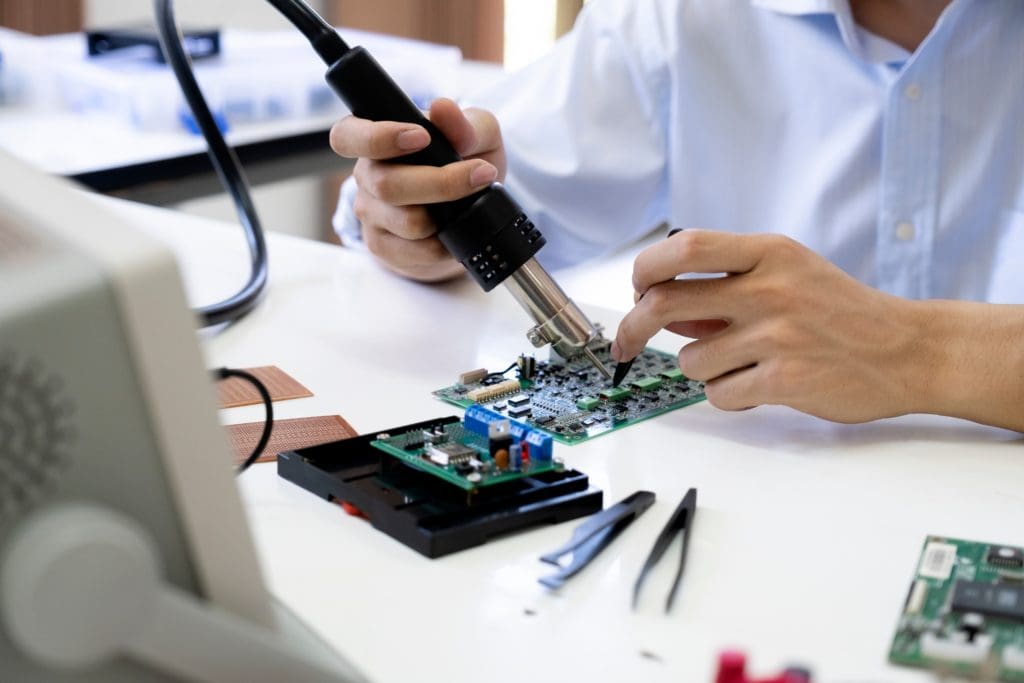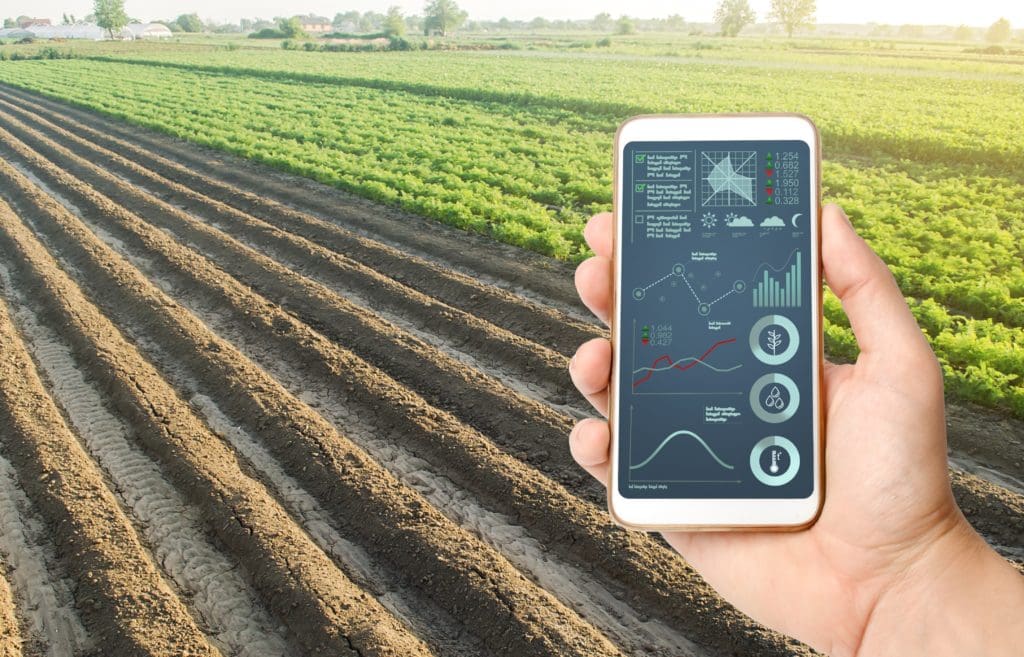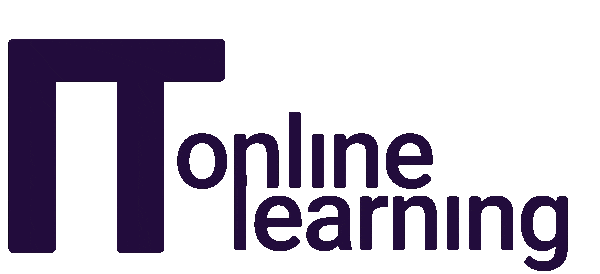What Is the Internet of Things?
What are you even doing if you aren’t controlling the light bulbs in your house through an app on your phone?
This is but a glimpse of the future promised by the Internet of things.
In this future (which is already here) – everyday devices like your toaster, fridge, coffee machine, and light bulbs come equipped with sensors allowing them to hear, touch, and see the world around them.
Through this, these devices turn physical information into digital data. Once collected, this data helps to track the performance of these devices connected to the Internet of Things.
IoT (also known as the Internet of Things) must be clarified. Let us define it as simply as we can before unpacking what this technology means for our lives and work.
The massive number of physical devices worldwide connected to the Internet, all collecting and sharing data – is known as the Internet of Things. These devices – embedded with sensors, software, and other communication hardware – share data with other devices over the Internet.
Next, let’s explore the brief history of the Internet of Things and understand its beginnings to figure out where it might be heading next.

A Brief History of the Internet of Things Through the Years
1990
John Romkey made a significant contribution to the world of technology when he created the first Internet of Things (IoT) device: a toaster that he could control using his computer. This innovative creation laid the foundation for developing IoT technology and showcased the potential for connected devices.
1999
Kevin Ashton impacted the tech world when he coined the “Internet of Things.” With this term, he sought to describe the concept of everyday objects having the capability to collect and transmit data to a computer. This innovative idea paved the way for developing the IoT technology we have today.
2000
LG introduced their first connected refrigerator. This innovative appliance was equipped with cutting-edge technology, allowing it to connect to the Internet. However, with all of its bells and whistles came its hefty price tag of $20,000. Despite its high cost, this product marked a significant milestone in developing connected home appliances. It demonstrated the potential for smart technology in the kitchen..
2008
The world’s first Internet of Things (IoT) conference occurred in Zurich, Switzerland. Experts and industry leaders worldwide came together to discuss and explore the latest advancements in IoT technology.
2010
Tony Fadell, a renowned innovator in the technology industry, founded Nest Labs in 2010. The company is best known for its flagship product, the Nest Learning Thermostat, which revolutionised how people control the temperature in their homes.
2013
In recognition of its growing importance and widespread usage, the Oxford English Dictionary officially added the term “Internet of Things” in 2015. This term reflects the increasing significance of IoT in our daily lives and its potential to transform how we live, work, and communicate.
2014
In 2014, Amazon introduced the Echo, a revolutionary smart speaker that changed how people interact with technology in their homes. The device came equipped with Amazon’s virtual assistant, Alexa, which allowed users to control their smart home devices and access a wide range of services and information, all with voice commands.
The introduction of the Echo and Alexa marked a significant milestone in developing innovative home technology. It offered a new level of convenience and accessibility for consumers.
2016
The Mirai botnet was a large-scale cyberattack that occurred in 2016. The botnet was created by infecting over 600,000 Internet of Things (IoT) devices with malware, such as routers, cameras, and digital video recorders.
The malware allowed the attackers to take control of the infected devices and use them to carry out massive distributed denial of service (DDoS) attacks, meaning…. The Mirai botnet was responsible for some of the largest DDoS attacks in history, including attacks on major websites and internet infrastructure.
2020
The number of internet-connected devices, also known as Internet of Things (IoT) devices, has multiplied in recent years, reaching an estimated 20 billion or more!
2023
According to IoT Analytics, the number of Internet of Things (IoT) connected devices experienced a growth of 8 per cent in 2021, and the trend is expected to continue in the coming years.
The market research platform projects that the number of IoT devices will increase by another 22 per cent through 2025, reaching 27 billion. This rapid growth in IoT devices is due to technological advances, increasing demand for connected devices, and falling costs.
What Are Some Examples of Internet of Things Devices?
- Smart home devices include smart thermostats, smart locks, lights, and smart security systems. Devices you can control remotely using a smartphone or tablet app.
- Wearable technology includes smartwatches, fitness trackers, and smart glasses. These monitor physical activity, heart rate, sleep patterns, and other health metrics.
- Connected cars: here, think of vehicles equipped with GPS navigation, infotainment systems, and advanced driver assistance systems. These provide real-time traffic updates, directions, and entertainment options is another use of these devices.
- Industrial equipment such as sensors, actuators, and control systems are used in factories, power plants, and other industrial settings. These devices can monitor equipment performance, energy usage, and other parameters, helping to improve efficiency and safety.
Healthcare devices include connected medical devices, such as glucose monitors, wearable cardiac monitors, smart pill dispensers, and telemedicine systems. Improving patient care and monitoring the health conditions of people remotely is where these devices are beneficial.
Improved processor performance
Computer processors are the brains behind your computer and other tech devices. Recently, they’ve become more efficient! So much so that they can handle more information and do it more effectively, too.
Processors are then able to keep track of a lot of different devices at once and make sure they’re all working correctly. And because they use less power and can be made smaller, tinier devices – with the potential of making them “smarter” – can be used.
In short, this means we can have more intelligent devices and bigger processors to control them, which is the convenience IoT promises.
The software evolution of AI and Machine Learning
The more devices connected to the Internet, the more data we continue to collect. People can only keep track of some of this data, especially in large and complicated networks.
That’s where AI and machine learning come in handy! These technologies can look at all the data as it comes in and find meaningful patterns and information. They can also spot potential problems before they happen.
AI and Machine learning are another driving force behind the Internet of things because of their ability to identify patterns, bottlenecks, hazards, and imminent failures as the data comes in.
Data is becoming liberated from silos.
In different companies and organisations, storing information and data in separate places is still common practice and is sometimes looked at closely. The Internet of Things is changing that.
Now, information from different sources can be brought together and analysed simultaneously to assist organisations in seeing the bigger picture and devise strategies to increase efficiency and save money.
For example, a business realises an inefficient process continuously occurs by working together with other departments – unhindered by silos and bureaucracy – time and resources are used effectively! The Internet of Things makes it easier to make the most of data!
Increased battery-powered performance
You’ve likely heard about electric cars that run on batteries. Their performance has been steadily improving, with longer travel distances and more power produced.
But did you know these improvements are also happening with devices connected to the Internet of Things?
Devices that can work without a constant power source are increasingly important. They are beneficial in places like Agritech and Environmental Monitoring in rural and far-out areas.
The ability of these devices to keep working for years without being charged is a real game-changer. It’s significantly impacting industries that need this kind of technology.


Enter ChatGPT
We asked the AI taking the world by storm what it predicts for the future of the Internet of Things, including potential careers and opportunities likely to result from this technology.
Tell Us More About the Internet of Things and the Future of Work
The Internet of Things (IoT) can potentially transform the future of work in several ways. Here’s how IoT is likely to impact the future of work:
Automation
IoT-connected devices and systems can automate menial tasks, freeing workers to focus on higher-level tasks. For example, smart factories use IoT-connected machines and sensors to automate production processes, reducing the need for manual labour.
Connected Workers
IoT-enabled devices and tools make it easier for workers to connect and be productive, regardless of location. For example, wearable devices and IoT-connected tools allow remote workers to stay connected and collaborate with their teams in real-time.
Predictive Maintenance
IoT-enabled predictive maintenance systems are changing how maintenance tasks are performed, allowing organisations to schedule maintenance based on actual usage and condition rather than fixed schedules. This can lead to improved productivity, increased uptime, and reduced costs.
Real-time Monitoring and Analytics
IoT devices and systems are generating vast amounts of data in real-time, which, when analysed, improves decision-making and optimises operations. This increases the efficiency and productivity of organisations and makes better use of resources.
Gig Economy
IoT-enabled platforms and tools are making it easier for people to participate in the gig economy, whether as freelancers, entrepreneurs, or independent contractors. Greater flexibility and autonomy for workers is achieved, as well as increased competition for traditional employers.
Overall, the Internet of Things will significantly impact the often touted “Future of Work”, leading to new opportunities and challenges.
Workers must be proactive in developing the skills and knowledge necessary to thrive in this changing landscape.
Predict the Major Trends and Developments in the Internet of Things That Are Likely To Happen
Edge Computing
Is becoming increasingly important in IoT, as it enables devices to process data and make decisions at the edge of the network rather than in the cloud. Reduced latency results and improvements in reliability & security occur, especially in IoT applications that require real-time decision-making.
5G and IoT
The roll-out of 5G networks will significantly impact IoT, enabling the creation of new use cases and applications that were impossible with previous generations of networks. For example, 5G networks will support many connected devices with much higher bandwidth and lower latency.
Artificial Intelligence and Machine Learning
Artificial intelligence (AI) and machine learning (ML) are becoming increasingly important in IoT. They allow devices to process and analyse vast amounts of data in real-time, leading to more efficient and intelligent operations.
IoT Security
As IoT continues to grow, security remains a significant concern, mainly as more sensitive data is generated and transmitted by IoT devices. There is an increasing focus on developing new security technologies and protocols to protect IoT devices and networks from cyber threats.
IoT and Blockchain
The integration of blockchain technology with IoT will see continuous growth in the coming years, as it provides a secure and decentralised means of exchanging data and value between devices. For example, blockchain-based IoT systems create a safe and transparent supply chain and secure sensitive data and transactions.
IoT and Smart Cities
IoT is playing a big role in creating smart cities that are increasingly dependent on technology to provide a seamless experience for residents. Expect this to continue as cities look for ways to become more efficient, sustainable, and livable. For example, smart cities may use IoT-connected sensors and devices to manage traffic and energy usage – all to improve public health.
How Should We Prepare for These Developments?
Developing foundational skills and knowledge in relevant areas will help you learn and take advantage of the opportunities created in the Internet of Things technology revolution. The following are ways to prepare:
Stay informed
Keep up with the latest trends, technologies, and developments in IoT by reading industry reports, attending conferences and events, and following thought leaders and experts.
Developing technical skills
Technical and non-technical skills are required for IoT, including programming, Data Analysis, and Cloud Computing. Consider taking courses or online tutorials to develop your technical skills in these areas.
Learn about IoT security.
As IoT continues to grow, security remains a major concern. Having a good understanding of security threats and how to mitigate them is vital. Consider taking courses or certifications in IoT security to gain expertise.
Build a network
Connect with other professionals in the IoT field to learn from their experiences, exchange ideas, and find potential job opportunities. Consider joining professional organisations, attending industry events, and participating in online forums and communities.
Get hands-on experience
The best way to learn about IoT is by doing. Consider working on personal projects, contributing to open-source IoT projects, or participating in hackathons to gain hands-on experience with IoT technologies and applications.
Be adaptable
IoT is constantly evolving, so flexibility and adaptability are important to stay ahead of the curve. Consider taking courses and certifications to keep up-to-date with the latest technologies and developments.
What Do People Need To Understand About the Internet of Things?
- The Internet of Things is transforming many industries by changing how many industries operate, from manufacturing and transportation to healthcare and agriculture. By connecting devices and collecting data, IoT enables organisations to automate processes, optimise operations, and improve decision-making.
- New opportunities for innovation and growth will increase exponentially with the Internet of Things and new job roles and careers. Skills in Data Analysis, cloud computing, and security will continue to grow in demand.
- Security and privacy concerns will persist as this technology continues to grow, security and privacy remain significant, and it is important to be aware of the potential risks and cyber threats with this emerging technology.
- It is not just about technology. While the Internet of Things is technology-driven, it also has important social and cultural implications like privacy, employment, and the distribution of wealth and power. It will also bring to light the ills and inequality that persist in society.
- IoT is just getting started because it is still in its growth stage. We should expect much more development in the years to come.
As IoT continues to evolve, it will create new opportunities and challenges. Staying informed and prepared for these developments is essential.
What Possible Jobs and Opportunities Can People Explore in the Internet of Things?
Specialist Internet of Things software development
IoT relies on software to connect devices, collect data, and enable communication and automation. These software developers will create and maintain the software that runs on the Internet of things devices and platforms.
Data analysis and management
Because of the vast amounts of data that devices generate, data analysts and managers will play a key role in leveraging this data to improve decision-making and optimise operations.
Cloud computing and network engineering
As previously mentioned, devices generate and transmit data over networks that are stored and processed in the cloud.
Network engineers and cloud computing professionals will be in demand to design, deploy, and maintain the networks and cloud infrastructure that support IoT.
Internet of things specialist cyber security
Cyber Security will continue to be a major concern and talking point; experts who understand the risks and how to mitigate them in this field will play a part. IoT security professionals will use their expertise to protect sensitive data and devices from cyber threats.
Product management
Expect to see a lot more IoT products and solutions. Product Managers will be tasked with helping to design, develop, and bring these to market.
Project Managers will be responsible for identifying customer needs, defining product requirements, and ensuring products are delivered on time and within budget.
Internet of Things marketing and sales
Products and services need customers to sell. Enter a new and exciting marketing category focused on marketing in the Internet of Things.
Professionals with experience in Digital Marketing and sales will help drive growth and adoption. They will develop marketing strategies, build customer relationships, and close deals in this specialist role.
Consulting and implementation
While the technology is exciting, it will likely become challenging for businesses to implement the technical solutions independently.
Consultants specialising in the Internet of Things and implementation specialists will help organisations plan, design, and implement IoT solutions and provide ongoing support and guidance.
The responses provided by ChatGPT and our research show that the Internet of Things will significantly impact how we live, work, and engage with the world around us.
From smart homes and cities to industrial technologies, healthcare, network connectivity, apps, and more, to the jobs and careers of the future, we can expect due to the growth of IoT: this is a field worth keeping an eye on.
Build Recession-Proof Skills in Less Than a Year!
With ITonlinelearning, now you can!
Are you tired of worrying about job security, especially during these uncertain economic times? Do you want to invest in your career and build skills that employers will be hiring for now and in the future?
How about landing a job in an industry where you are challenged and feel invigorated by your work? All while earning a salary that can support your lifestyle?
Let us show you how!
We are a specialist training company that helps people like you become qualified for the careers, industries and jobs you genuinely desire.
We believe that:
Building in-demand, recession-proof skills will give you an edge in today’s competitive job market.
By developing your skills in Project Management, Data Analytics, Business Analysis, Management, and IT, you will set yourself apart from others by demonstrating that you have the qualifications and knowledge to apply to a job role, company and team – and add immediate value that employers and clients appreciate.
Contact one of our career consultants to learn more about how we can fast-track you into project management, data analyst, business analysis or the IT job you want- Guaranteed or your money back!
Build the recession-proof skills that truly matter – starting today!
Speak to one of our trained career consultants to help guide you in tailoring a specialist course package that meets your career and job requirements.








